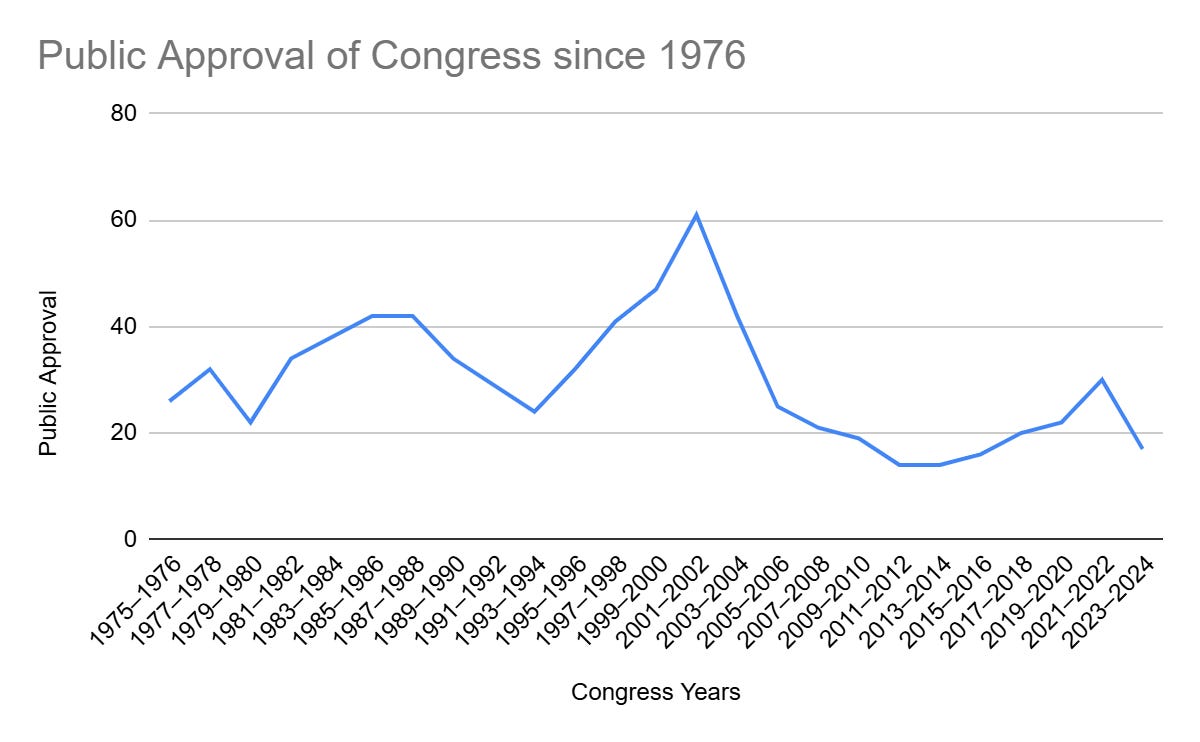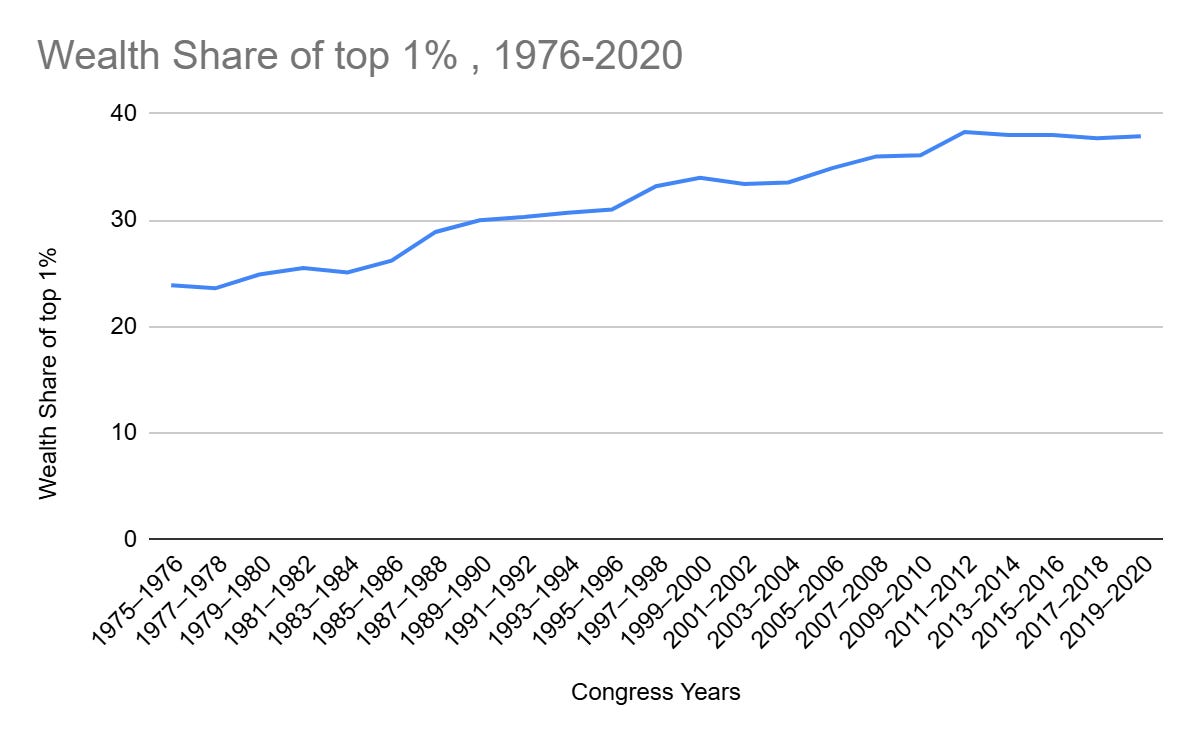You might recall that on September 11th, 2001, a bipartisan group of congresspeople gathered on the capitol steps and delivered an impromptu rendition of “God Bless America.” This spasm of much needed patriotic feeling accounts for the spike seen in the chart above, which otherwise depicts the steady souring of Americans on the legislative third of their governmental three-legged stool.
Notably, we consistently rate our own representatives significantly higher than we rank the overall body, which I find funny and true and sad all at the same time. (Similarly, we each may individually like and even esteem a few people of disreputable ideology while knowing that overall their tribe is a sorry band of criminally self-centered louts bent wittingly or not on world destruction.)
9/11 blip aside, “Public Approval Chart”1 suggests our least loathed Congresses are totally controlled by the party not in power in the White House. Thus Reagan and the Democratic Congresses of the 80s and Clinton and the Republican Congresses of the 90s. In both instances, lots of major legislation was passed and signed into law by the pressie.
We entered the horse latitudes of depression in the Obama/Boehner years, in which a GOP fractious with Tea Party energy had just enough power to grind the country to a halt. During this time dems and reps handed off control of congressional branches every now and then—suggestive of a worsening national mood. Impatient and restive, we kept auditioning brief majorities before chucking them out on their asses. As bosses go, we could maybe stand to chill a little. As for now, we’re still throwing fits.
You’d think no one in their right mind would want a seat in Congress—a truism that, as conventional wisdom goes, is probably pretty self-defeating, when you think about it. Nevertheless they keep getting more and more expensive. For this we have to thank the courts, mostly the Supreme one. Specifically, we have five rich lawyers to thank for this circumstance, groups of whom have several times over the years peeled away restrictions on campaign financing with no regard whatsoever for what the American people actually think about such things. It’d be like if all of the country’s most pressing legal questions devolved on the New York Knicks.
Most grandly, a pick-up-basketball-game-sized squad of rich lawyers did this with the Citizen’s United decision in 2010 (which, given the parties involved, could have more accurately been called Ratfuckers v. Hilary). Finding for the ratfuckers in the name of free speech, the Knicks opened the floodgates to corporate donors and anonymously bankrolled super PACs.
There are about 340 million Americans in America. A decisive majority of the Supreme Court equals 1.47058824 x 10 to the negative 6th power of that number, or: .00000001 percent of America. About 70% of us today think that there should be limits on political spending. I think you’d agree that this represents a fairly staggering accord of public opinion. Unfortunately, .00000001 of us disagree, so…“Average Cost of a Seat Chart”.
As seats have become more expensive to obtain and public opinion has worsened, Congress has become less productive. That’s interesting. Who’s “winning”, in this scenario? Maybe we should follow the money.
“Wealth Share Chart” shows the share of national wealth owned by the top 1% of Americans since 1976. That year, the top 1% owned $4.24 trillion, which amounted to almost a quarter of the country’s total wealth. In 2021 that had grown to over $50 trillion, nearly 40% of the national bottom line.
Significantly, the super extra tippy-top has seen the most embarrassing accumulation. The top 10% of the top 1% have accounted for the lion’s share of upper crust movement. Last year you needed to make a hair under $800,000 to slink behind the velvet rope of the 1-percent club. An annual income of a cool $3 mill would net you membership to the VIP room.
Historically, the peskiest threat to a fat American fortune is Congress. Look what a great job they’ve done neutralizing that threat!
All numbers for these charts come from the FEC, the Library of Congress, and realtimeinequality.org.






